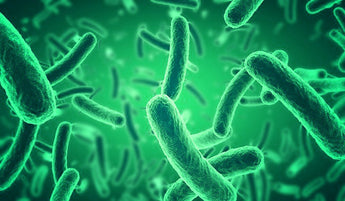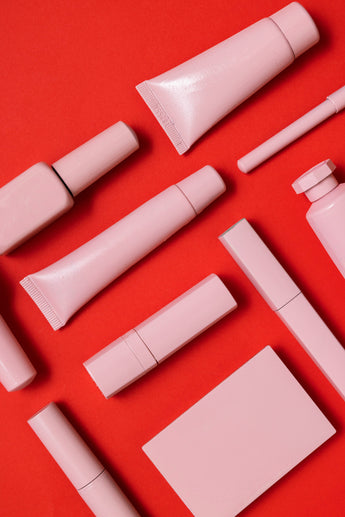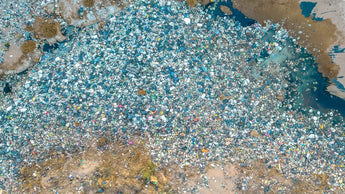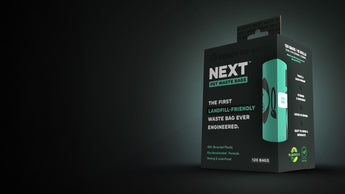What is Plasgreen?
Learn MoreHow Does it Work?
Explore the ScienceWhy Use it?
See WhyWill it Work for Me?
Learn MoreWhat is Plasgreen?
300X Faster
Plasgreen is a patented, organic additive that accelerates plastic biodegradation in landfills and oceans.
How does it work?
Landfill-Friendly
Plasgreen enhances the conversion of plastic into biogas and organic matter through microbe consumption of its polymer chains.
Explore the Science

* Tests have shown that Plasgreen accelerates biodegradation of plastics in the ocean and soils. However, because Plasgreen works best in anaerobic conditions (no oxygen) it does take longer to break down in the ocean than in a landfill. † Conversion to biomass only happens in landfills where biogas is captured.
How does Plasgreen work?

Plasgreen creates chemical signals that attract microbes, which then begin consuming the polymer chains of the plastic.
Plasgreen attracts microbes which begin colonizing on the surface of the plastic. These could include amylase and lipase microorganisms. Using secreted enzymes and water these microbes hydrolyze the plastic. Plasgreen then reacts with the enzymes to reduce the polymer chain (which is hard for the microbes to eat) into bite size pieces.


subheading
Plasgreen expands the polymer structure allowing the microbes to feast on the plastic.
Plasgreen effectively expands the polymer structure and allowing the microbes to feast deeper into the plastic. This creates little ‘caves’ in the plastic and increases the ‘effective surface area’ to which microbes can attach and speeds up the natural biodegradation process.


This process continues to break down polymers biologically, like organic material, but at a faster rate than traditional plastics.
Organic biodegradation goes through four main stages. They are Hydrolysis, Acidogenesis, Acetogenesis and Methanogenesis. Due to Plasgreen, the plastic goes through these stages at an enhanced rate.


The plastic is converted to organic material and gasses that can be converted to energy.
The polymer is consumed as the microbes convert it to methane, carbon dioxide, biomass and water. Advances in landfill technology are capturing more methane than ever before and converting it to energy.

This chart is indicative of Plasgreen-treated plastic PE film biodegradation in landfill conditions as tested to ASTM 5511-02: https://edenresearchlab.com/ERL/ASTM_D5511-11.html. Actual biodegradation rates will vary according to the type and construction of the plastic, microbe population, solid content, temperature, oxygen levels and moisture levels. Results should not be extrapolated past the actual duration of the test.
Why use Plasgreen?
"Plastic pollution is growing relentlessly as waste management and recycling fall short."
- Organization for Economic Co-operation and Development
2022 Global Plastics Outlook Report
Plasgreen does not affect any of your plastic's characteristics.
Other alternative technologies for accelerated landfill biodegradation of durable plastics have had major drawbacks preventing widespread adoption. Oxo-degradation and bioplastic hybrids can fragment creating harmful microplastics, contaminate the recycling system, and negatively affect the integrity of the plastic.
Plasgreen has overcome these challenges and does not affect any of the following plastic characteristics:
Strength

Texture

Durability

Appearance

Impact Resistance

Safety

Will Plasgreen work for my products?



Versatile, Durable and Safe
From bags and bottles to shoes and jackets, Plasgreen works in almost any plastic. Including recycled plastic.
Plasgreen is used in very small amounts in the manufacturing process and does not affect the integrity of your product until it is in an anaerobic microbe-rich environment like landfills.
As an organic, non-toxic additive, independent third-party testing has verified that food-safe products are still food-safe with Plasgreen.
Plasgreen is FDA compliant, Toy Safety Standards compliant and meets EU REACH, RoHS and ESFA apparel requirements.
Made with Plasgreen
The Red Bull Ampol Racing Team uses Plasgreen in their apparel.
Red Bull Ampol Racing Team Store
"We worked with Plasgreen to design and engineer a whole new category of Landfill-Friendly™ pet waste bags."
Dave Wesch, Founder of Doggy Do GoodFrequently Asked Questions
With any new technology comes a lot of questions. We've gathered some of the most common ones here.
If you have a question not found here, please contact us.
What is the difference between plastic ‘breaking down’ and ‘biodegradation’?
Fragmentation of plastic (or breaking down) is most often caused by oxo-degradation. Usually an additive is mixed with the plastic that begins to deteriorate the plastic when exposed to oxygen (which happens as soon as the product is made).
This often causes microplastics which can be detrimental to the environment. Biodegradation is the consumption of the plastic by microbes that convert the polymer chains into gasses and biomass. This happens to plastic over a very long period of time.
Plasgreen does not break down the plastic, it just helps the microbes to accelerate the natural process of biodegradation in landfill conditions.
Is Plasgreen safe?
Yes. Plasgreen is an organic, non-toxic additive that is used in very small amounts in the manufacturing process. Independent third-party testing has verified that food-safe products are still food-safe with Plasgreen.
Plasgreen is FDA compliant, Toy Safety Standards compliant and meets EU REACH, RoHS and ESFA apparel requirements.
Will my plastic fall apart?
No. Plasgreen only assists microorganisms to consume the plastic in anaerobic conditions (no oxygen) and microbe-rich environments such as landfill.
Tests on products containing Plasgreen show the same functionality and stability as plastic that does not have Plasgreen.
Plasgreen does not affect any of the following plastic characteristics:
- Strength
- Texture
- Durability
- Appearance
- Impact resistance
- Safety
Is Plasgreen-treated plastic compostable?
No. Plasgreen does not make plastic compostable. While it will accelerate biodegradation under microbe-rich anaerobic conditions like landfills, it will not biodegrade quickly enough to be considered compostable for home or industrial composting.
If Plasgreen is so good, why isn’t everyone using it?
We believe that they will. This is a new additive and new technology takes time to be adopted.
Unfortunately, the complications with earlier technology such as oxo-degradation has resulted in confusion and outdated laws in some markets around the world.
The wording and understanding of bioplastics and biodegradation have been muddled. But as the benefits of Plasgreen are understood by the community, regulators and manufacturers, it will be widely adopted.
Is Plasgreen a bioplastic?
No. Bioplastic refers to the source of the material. Plastic substitutes made from natural materials such as food waste are bioplastics.
Plasgreen is an additive for traditional plastic (including recycled plastic) that accelerates the biodegradation of the plastic in landfill conditions. So Plasgreen is not a bioplastic.
Can Plasgreen-treated plastic be recycled?
If the plastic is able to be recycled without Plasgreen, it can be recycled with it.
Unlike some other additives, there has been no indication of contamination or issues on recycling with the Plasgreen additive.
Since it doesn’t noticeably affect the plastic until it is in an anaerobic microbe-rich environment like landfills, it can continue to go through the recycling process.
In fact, Plasgreen promotes the use of recycling wherever possible, instead of sending plastic to landfill.
Will Plasgreen work with recycled plastic?
Yes, Plasgreen will work just as effectively with recycled plastic. In fact, we see this as an amazing opportunity for many brands.
By using recycled plastic and adding Plasgreen, no new raw material is required. This gives the plastic a second life (and third and fourth if it is recycled again).
But should the recycled material end up in a landfill, Plasgreen will enhance its biodegradation, thus removing plastic from the planet faster.




